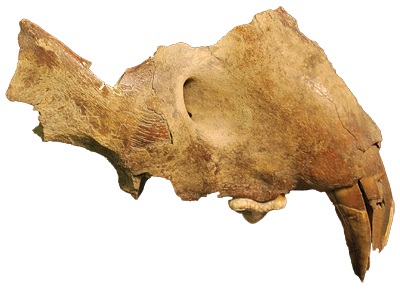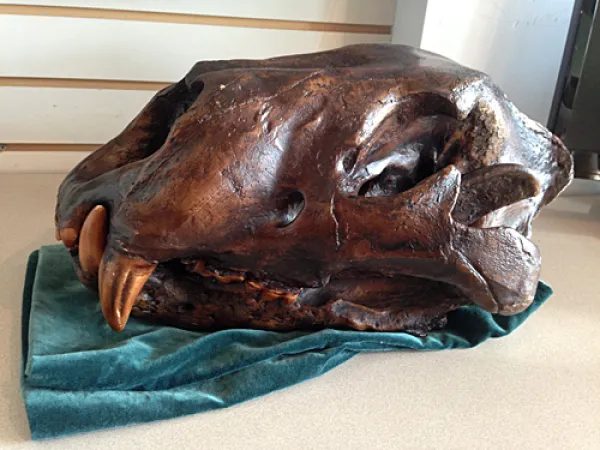The Beringian lion (Panthera leo spelaea) was the largest and most abundant cat of ice age Yukon, and a member of the well-known "cave lions" from Europe and Asia. Lion fossil bones from Beringia are smaller than the rest of the European cave lions, suggesting that they could be a separate sub-species.

The ice age lions of Eurasia and Beringia are genetically distinct from the populations that later became the modern African lion, even though their historic ranges may have overlapped in the ancient Near East. Groups of lions expanded their range dramatically out of Africa during the middle of the Ice Age, appearing in Europe and Britain by around 500,000 years ago. It is not certain when lions crossed Beringia and first appeared in North America. Genetic evidence suggests they may have inhabited Alaska around 300,000 years ago. Some of these lions made their way south into the mid-continent of the United States around 150,000 years ago. After thousands of years of separation from one another due to the continental ice sheets, the southern population evolved into a unique species, the American lion (Panthera leo atrox).
Lions are the only modern large cats that live in groups or prides. Because their closest relatives, tigers and leopards, don't live in groups, scientists believe group living evolved early in lion evolution, back near the start of the Ice Age around two million years ago. Scientists today are continually searching for evidence that Beringian lions and their ice age relatives did in fact live in prides.
Early Eye-Witness Accounts
Another interesting ice age lion puzzle is about what these large cats looked like. Paintings by ice age people in Chauvet Cave in France and others in Europe consistently depict lions without manes. These paintings are considered very accurate, lifelike representations of how lions looked and how they behaved. One painting shows a maneless, male lion standing beside a female in a posture related to mating. To date, this is our best evidence that the ice age lions were maneless.
Unlike these ice age lions, the lions that persisted in southern Europe in historic times are consistently depicted in art with manes, suggesting they represent African lions that expanded north after the Ice Age. Manes in today's lions play an important role in sexual selection—in many populations, males with the largest, darkest manes are top choices for mating. This trait may well be linked to group living.
Manes also play an important function in preventing heat loss, with large manes providing insulation. Since the lions of Beringia faced cold ice age climates, it seems odd that male lions did not have manes. However, some suggest that the ice age lions were covered in a dense fur around their whole bodies, and not just around the neck and head area. This factor, related to insulation, reduced the biological potential for the development of manes in ice age Beringian lions.
Since lions with manes today seem to have a selective advantage, it suggests that the mane did not appear in the early stages of lion evolution. Also, since the African lions certainly had manes, it is possible that two types of lions co-existed in central Europe during the ice age—those with manes and those without.
Want to find out more? Check out the Beringian Research Notes on the American lion.
Preserved on the flank of a mummified steppe bison carcass found near Fairbanks, Alaska are the large claw marks of a predator. The only ice age animal capable of making them is the Beringian Lion.
You can see this bison carcass, known as Blue Babe, at the Museum of the North in Fairbanks.


